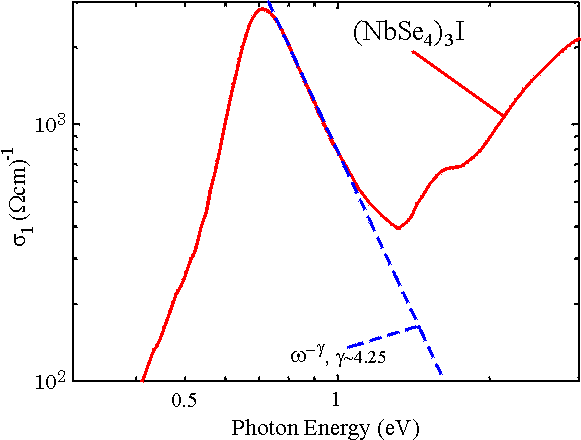One-dimensional band insulators with unexpected spectral signatures
One-dimensional (1D) metals have been a fascinating topic of research, both theoretically and experimentally. Much of the interest stems from the theoretical prediction that Fermi liquid theory breaks down in one-dimension, and a novel quantum liquid is formed, the Tomonaga-Luttinger liquid (see above the paragraph on the Bechgaard salts). We have explored the possibility that even a 1D band insulator may deviate significantly from the standard preconceptions. Indeed, our optical data on (NbSe4)3I show unexpected spectral signatures. The optical conductivity (Fig. 3.5) has a high frequency tail following the power law σ1(ω)~ ω-γ with γ ~ 4.25. This exponent is distinctly different from what has been measured or predicted in other 1D systems. In typical 1D Mott insulators like the Bechgaard salts (TMTSF)2X (for X = PF6, AsF6 and ClO4) γ ~ 1.3 (Fig. 3.6) is observed, in line with theoretical predictions, while for a rigid 1D band insulator γ ~3 or ~2 when phonons are also included as in the case of CDW systems like the (TMTSF)2ReO4 salt. That our observed γ-value is larger than those predicted, suggests that current relaxation involves a less efficient mechanism in (NbSe4)3I than those treated theoretically hitherto.

